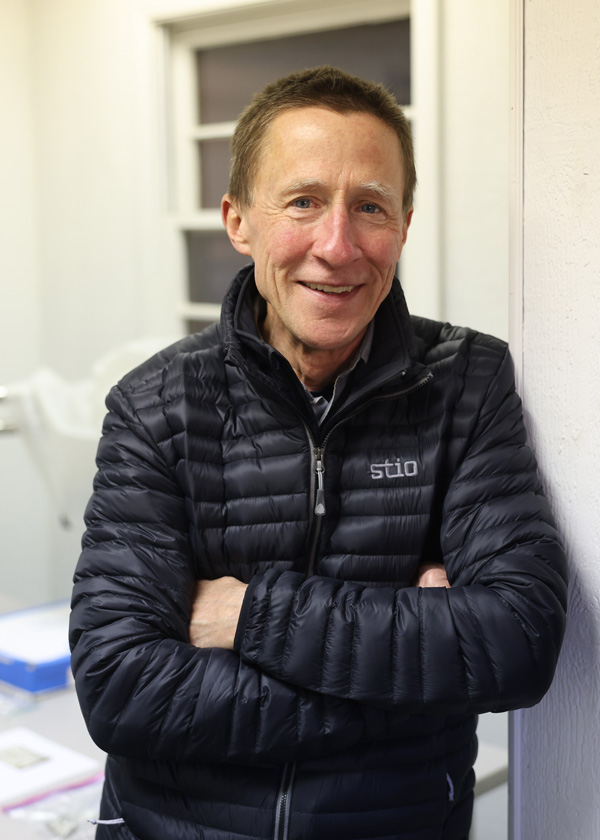Fruitful Find Within the Walls of Pavilion X
As part of his work as an architectural conservator at UVA, Mark Kutney has fielded plenty of calls from carpenters working on projects across Grounds. But one call, from the lead carpenter on a Pavilion X renovation project in 2012, just felt different.

The carpenter didn’t have a usual question about a beam or some other project detail. Instead, while cutting into a wall to install a light switch, an electrician found historical documents hidden behind it. The discovery led Kutney to a treasure trove of documents and trinkets inside the pavilion’s nooks and crannies that date to the early 1800s. And among the stash that Kutney found in the pavilion’s attic was a recipe for fruitcake with the name Dr. J.L. Cabell on it.
That recipe, re-created for modern cooks by historian Libby O’Connell (Grad ’79, ’87), is featured in Hoos in the Kitchen, a 2017 cookbook by then-staffer Melissa Palombi. (Scroll down for the full recipe.) Palombi learned about the discovery as she hunted across Grounds for interesting recipes to share from UVA administrators, faculty, staff, alumni and friends. Among the cookbook’s recipes are bruschetta from former Dean of Students Allen Groves (Law ’90) and Vice Provost for the Arts Jody Kielbasa’s pierogi.
The fruitcake recipe was stained and torn, but most of the ingredients could be made out. And, calling for 2 pounds each of flour and sugar and 20 to 24 eggs, it made a giant fruitcake.

The size wasn’t so unusual for the time, wrote O’Connell, former chief historian for the History Channel and author of The American Plate: A Culinary History in 100 Bites. Recipes for “enormous fruitcakes” in 18th and 19th century cookbooks were common, she notes in the introduction to the recipe in Hoos in the Kitchen.
The cake, typically made in the winter, sent a message as well—that the baker could afford luxuries such as large quantities of spices from around the world, O’Connell said in an interview. “Conspicuous consumption existed back then.”
Palombi says she can still feel the surge of adrenaline as things fell in place to include the fruitcake recipe in the book. UVA Libraries gave her permission to document it for the first time, Kutney invited her to photograph what he found, and O’Connell was quick to lend her expertise, she says. “It’s like a mutual enthusiasm.”
Still, years later, plenty of mystery surrounds the recipe, including why it was in Pavilion X and why so many artifacts, such as a sewing spool, perfume bottle, quartz crystals and an 1828 coin, were left behind, Kutney says.
Dr. J.L. Cabell, or James L. Cabell (Col 1833), returned to UVA about five years after graduating and served as professor of anatomy and surgery for more than 50 years. He lived on the Lawn, but in Pavilion II, not Pavilion X. Cabell was among the founding members of the American Medical Association but is also remembered for propagating ideas of eugenics and white supremacy. (Old Cabell Hall is named after state lawmaker and UVA booster Joseph C. Cabell, his uncle.)

Items were found in different places, including in the attic where Kutney spent hours searching with a flashlight. According to a UVA history of Pavilion X, “functional attics” weren’t part of Thomas Jefferson’s original design, but stairs were added to Pavilion X around 1832.
“In the tightest of crannies, I was finding letters and invoices,” Kutney says.

One name that kept popping up was Fanny Hunter, whose aunt was married to Pavilion X resident Henry St. George Tucker, a law professor, records show. According to letters and invoices, Hunter was a seamstress, ordering thread, needles, ribbon and other items.
The recipe was found in the same area as Hunter’s documents though there is no known direct link between Hunter and Cabell. Kutney can only guess what it was doing in Pavilion X and why it had Cabell’s name on it. But, in the 1800s, UVA was surrounded by undeveloped land, and Charlottesville was a short horse ride away, he says.
“There was this sort of community that probably looked inward,” Kutney says of the Lawn. “And so, it made sense that somebody in Pavilion II would be sharing a recipe with somebody in Pavilion X.”
In other words, it might have involved nothing more than an old-fashioned recipe swap.